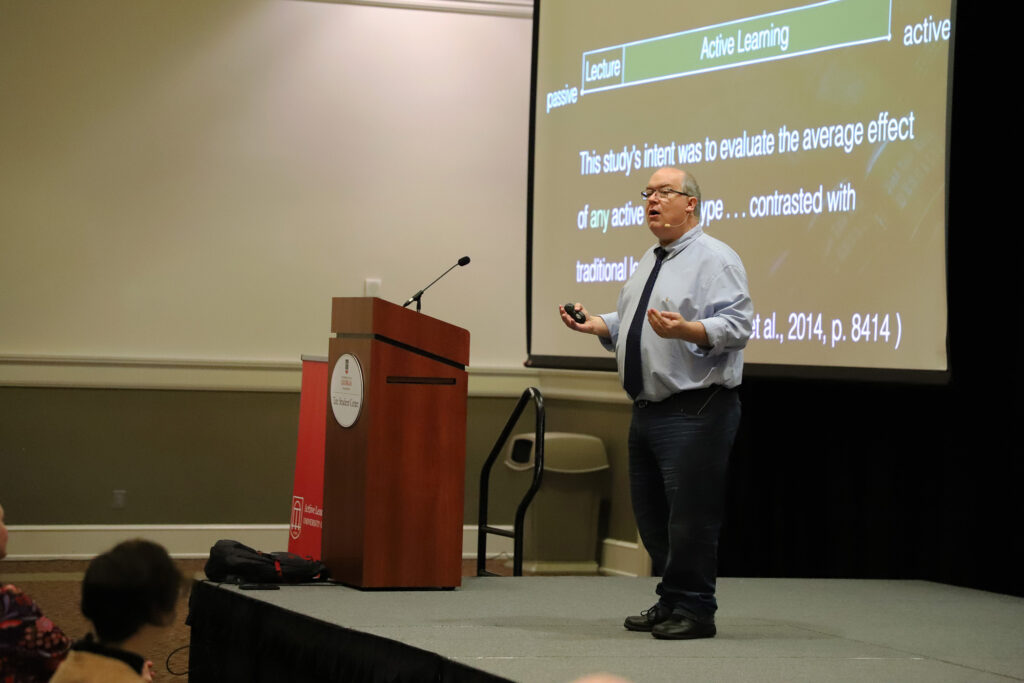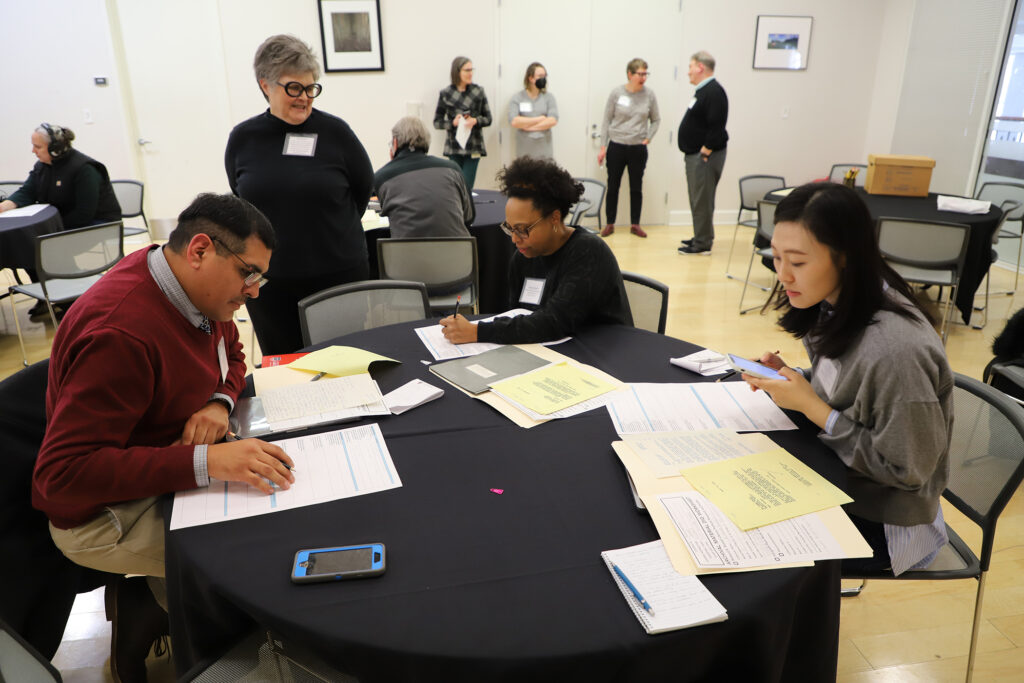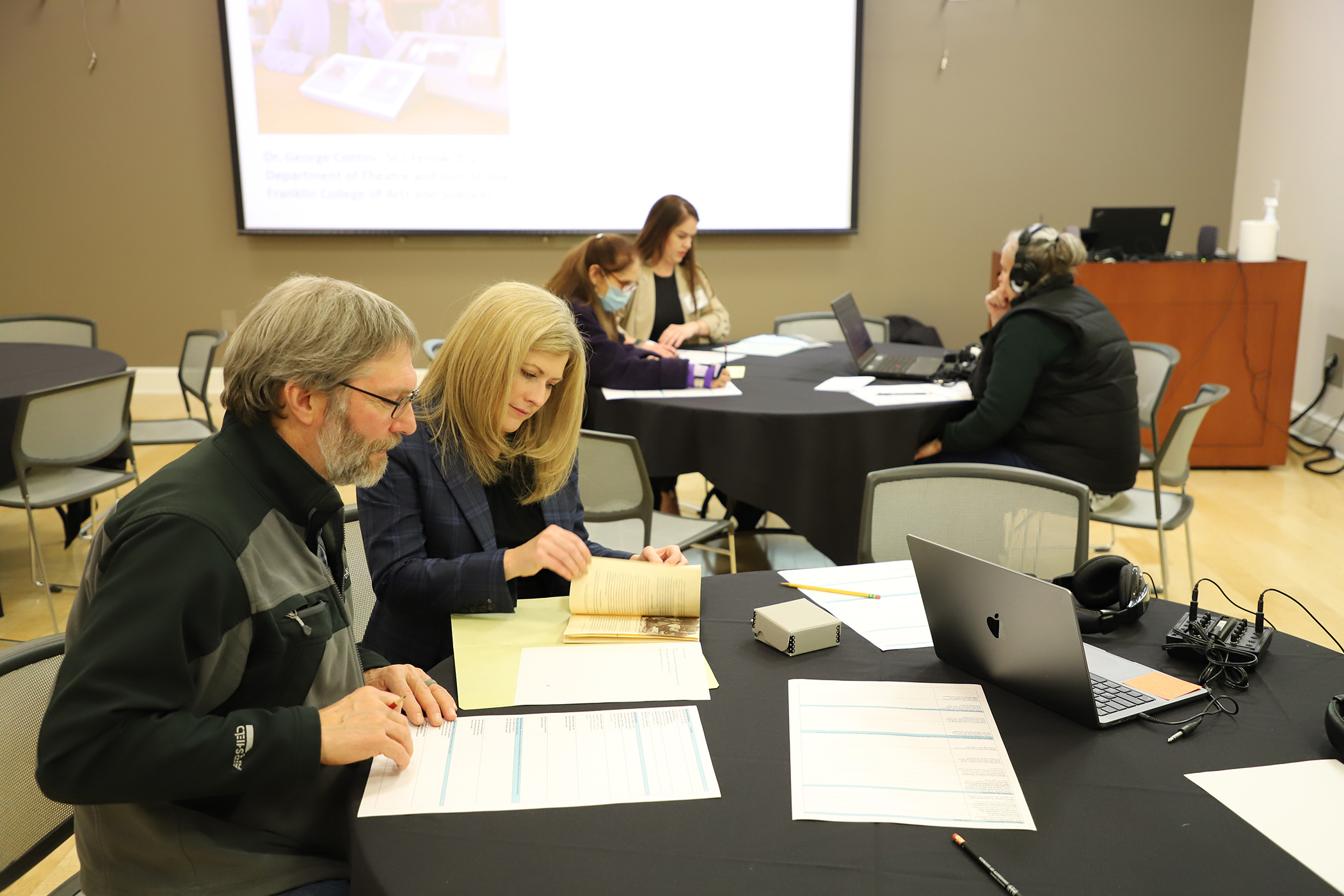The University of Georgia hosted its inaugural Active Learning Summit to celebrate how this method of learning is already changing instruction across campus and to explore ways to expand that culture in the future. Approximately 270 participants gathered at the Tate Student Center on Feb. 14 for the event.
The summit’s opening ceremony began with a welcome from S. Jack Hu, the university’s senior vice president for academic affairs and provost. Hu provided a brief summary of the five-year, $6 million campus-wide Active Learning Initiative launched in 2022 as part of the university’s latest Quality Enhancement Plan. That plan was foundational to UGA’s reaffirmation of accreditation by the Southern Association of Colleges and Schools Commission on Colleges.

The Active Learning Initiative builds on existing programs such as the Center for Teaching and Learning’s Active Learning Summer Institute with the goal of growing active learning at UGA across three strategic areas: instructor development, student engagement and classroom enhancement.
“We are so thankful that so many instructors, students, staff and administrators in the campus community chose to attend our inaugural Active Learning Summit — the excitement throughout the day was electric,” said Leah Carmichael, director of active learning. “UGA is leading the way among its peers in creating a university-wide culture of active learning. The presence and engagement of so many at the summit demonstrate that this initiative is successful because a growing number of committed individuals are interested in making our students’ experience even better.”
Processing knowledge as the key to in-depth learning
Peter Doolittle, a national scholar in active learning and a professor of educational psychology at Virginia Tech, gave the keynote address. He spoke about the theoretical foundations of active learning and the struggles to define the term and provide clear guidance to faculty on how to effectively use active learning in their classrooms. Active learning is not a strategy, he said, but rather a flexible and in-depth method of learning where students process knowledge by thinking, doing, expressing emotion and interacting.
“When we think about learning, we need to think about processing. Part of what we need to do is build the environment that fosters the kind of processing necessary for students to achieve our outcomes,” Doolittle said. “So, I’m not giving you a strategy — that would be counterintuitive. It’s what underneath the strategy that counts. What are students going to have to do as they enact your assignment or your project or your conversation in your class?”

Also during the opening ceremony, Vice President for Instruction Marisa Pagnattaro presented 91 instructors with certificates for completing the Active Learning Summer Institute between 2018 and 2022. More than 68,000 UGA students have been impacted by the redesigned courses taught by instructors who have participated in the institute.
Active learning in practice at UGA
While enjoying refreshments, summit participants browsed posters created by the 2022 ALSI cohort highlighting the classes they redesigned to incorporate active learning. The posters featured a wide range of courses across UGA departments and schools that included active learning statements, details on each course redesign, situational factors that affected that process and the impact and institutional takeaways of the changes.
The summit also featured a showcase that provided an overview of the Active Learning Initiative at UGA along with interactive exhibits. In the instructor development portion of the showcase, participants browsed through active learning instructional techniques. A complete listing of all those techniques, along with details on how to implement them in classrooms, is available as an online Active Learning Toolkit.
Another portion of the showcase focused on information about active learning ambassadors and peer learning assistants. The first cohort of 12 student ambassadors was selected in fall 2022, and those students work with the active learning director and management team to talk about active learning at UGA with students, faculty, administrators and external audiences. Peer learning assistants are students who return to an undergraduate course they have already completed to work with the faculty members to facilitate discussions and other active learning approaches in that course. Since 2020, 710 peer learning assistants have supported 148 sections of 23 courses across 11 departments.
Looking to the future of active learning
Summit participants had the chance to try out different types of classroom furniture as examples of classroom enhancements that make it possible to implement more active learning techniques. So far, nearly all 625 classrooms on campus have been inventoried based on active learning attributes defined in the UGA classroom classification system. Future goals of the initiative include enhancing existing classrooms and selecting one classroom each year to renovate and redesign as a model active learning classroom. The first model classroom is Room 512 in the Grady College of Journalism and Mass Communication, and it is scheduled to be ready for use by fall 2023.
The summit ended with a series of panel sessions centered on active learning as it relates to topics such as teaching evaluations, study abroad, using peer learning assistants, diversity and inclusion in the classroom, First-Year Odyssey courses, archives-centered learning, writing across disciplines and fostering students’ sense of belonging and well-being.
“It was fantastic to see so many faculty members at the summit,” said Pagnattaro. “I’ve used active learning techniques in my own classroom to engage students. I particularly enjoyed talking with the active learning student ambassadors and hearing their impressions about different active learning activities. Active learning is the future of undergraduate education, and UGA is leading the way.”


